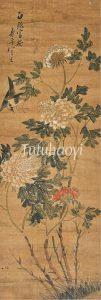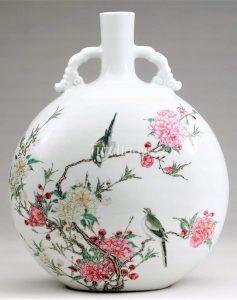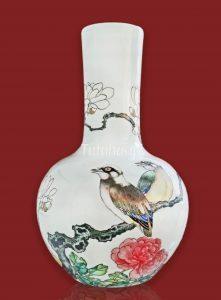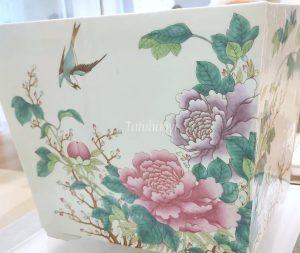May you enjoy wealth and prestige to a ripe old age
白头富贵
© Tutuhaoyi.com owns the copyright of the description content for the images attached. Quoting all or part of the description content on this page is permitted ONLY IF ‘Tutuhaoyi.com’ is clearly acknowledged anywhere your quote is produced unless stated otherwise. (本页描述内容版权归Tutuhaoyi.com所有,转发或引用需注明 “Tutuhaoyi.com”, 侵权必究, 已注开源信息的条目除外。)
Pun Design:
Chinese bulbul + Peony
Punning Details:
– ‘bai tou 白头 white-headed’, of ‘bai tou weng 白头翁 Chinese bulbul’ (the white-headed-old-chap bird) can imply a ripe old age;
– ‘fu gui 富贵’ in ‘fu gui hua 富贵花 peony’ literally, the ‘flower of wealth and prestige’, which is a nickname of ‘mu dan 牡丹 peony’
Therefore, the motif combination of Chinese bulbul and peony expresses the good wish to the recipient to enjoy wealth and prestige to a ripe old age.
‘Bai Tou Fu Gui 白头富贵’ is interchangeable with ‘Fu Gui Bai Tou 富贵白头’.
画面要素: 白头翁 + 牡丹
谐音详情: 取‘白头翁’中‘白头’, 意为‘年长, 长寿’; 牡丹别名‘富贵花’, 取‘富贵花’中‘富贵’二字
Related Pun Pictures:
May the length of your life be eternally prolonged 海屋添筹
May you do well in exams and enjoy wealth and prestige 功名富贵
Further Reading:
Appreciation of a top-tier Qianlong falangcai vase with red-whiskered bulbul decoration
Fig 1: Bai Tou Fu Gui 白头富贵图, hanging scroll, ink and colour on paper, Yun Shouping (1633–1690), courtesy of Beijing Tiangui Renshun Auctions, 2021, Lot 261
Fig 2: famille rose bottle-shaped flask, Yongzheng period (1723–35), Qing dynasty, courtesy of the Trustees of the British Museum, PDF. 824
Fig 3: famille rose porcelain vase, Yongzheng period (1723–35), Qing dynasty, courtesy of The Guimet Museum, Paris, photograph by Jean-Pierre Dalbéra
Fig 4-5: famille rose porcelain planter, Guangxu period (1875–1908), Qing dynasty, courtesy of Nanjing Museum, Jiangsu, China, photograph by Rachel Ma
Fig 6: porcelain jar with underglaze blue decoration, Guangxu period (1875–1908), Qing dynasty, courtesy of Mu Qing (2010), Qing Porcelain from Folk Kiln, Hebei People’s Publishing
Fig 7: Fu Gui Bai Tou 富贵白头图, hanging scroll, ink and colour on paper, Qi BaiShi (1864–1957), courtesy of Beijing Poly Auction House, 21 April 2012






